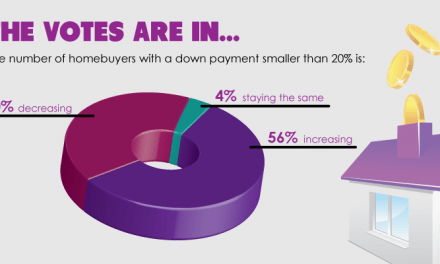Both housing prices and the rate of consumer inflation have dropped dramatically in this recession, but are the two factors related? The core personal consumption expenditures price index (core PCEPI) is used by the Federal Reserve Bank(the Fed) to monitor how much is paid for all consumable goods, except for food and energy, which jump up and down erratically based on shocks to supply, with no relation to demand.
The rate of inflation of the core PCEPI has dropped since mid-2008, but many skeptics believe this drop in inflation is attributable to the drop in home prices. If the price paid for homes were excluded, these skeptics argue, we would actually see rising consumer inflation. A recent report from the San Francisco Fed once again disproves the skeptic’s home price argument. The truth: while rental pricing is an integral factor of consumer inflation, home pricing has no effect whatsoever upon consumer inflation.
Moreover, even the effect of rental pricing is negligible. When core inflation is recalculated without considering any influence from the housing market, the inflation rate-change trend line remains essentially unchanged. In fact, housing accounts for a difference of only .2% in the inflation rate of the core PCEPI. Other evidence in the San Francisco Fed’s report supports this finding, demonstrating that the inflation rates of almost all goods and services have dropped considerably in the recession, many of them even more than the consumer cost of housing. More importantly, the asset price of actually purchasing a home on the market never even enters the picture.
first tuesday take: The San Francisco Fed’s report should put to rest (though it will not) the popular myth that home prices have any effect upon consumer inflation. Home prices — the focus of inflation skeptics — never exert any pull upon the rate of consumer inflation, and never have. This is because real estate is an asset, not a consumer good: indeed, the only consumable aspect of real estate is the right to live on residential property, expressed by its rental rate—never the price someone is willing to pay for the unrelated privilege of actually owning the property. In all other respects, home prices in a boom or bust behave the same as the prices of other assets, like stocks or bonds. Moreover, the price paid for a home never sets the rental value for that home.
Consumer price inflation figures are not set by the unpredictable and uncontrollable market pricing of assets, but by the much less volatile changes in the rental rate (or for owner-occupied property, the rental rate of equivalent property). While rental rates are essential to setting a property’s fair market value (FMV), asset (home) price inflation is determined by the difference between the property’s FMV and the price buyers are actually paying at the moment; two numbers which only infrequently coincide as they cross during a market cycle. A property’s value is a different concept from the price paid for the property.
Changes in home pricing do not affect rents, which only change gradually. Fear mongers believe that changes in real estate asset pricing is currently affecting the rate of consumer inflation (which includes rental rates, and nothing more) creating a hidden risk of increasing inflation. They are wrong, however, and always have been.
Re: “The Housing Drag on Core Inflation” from The Federal Reserve Bank of San Francisco


















